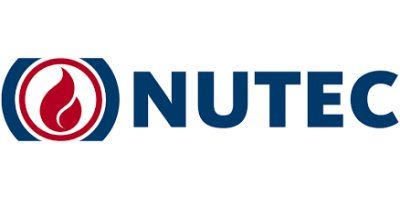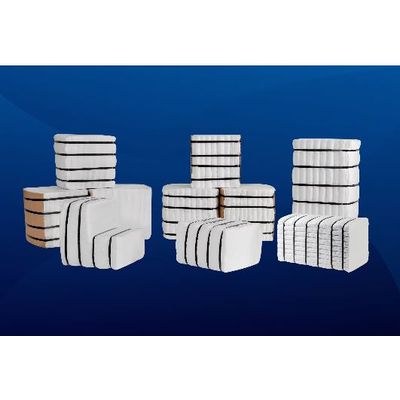The MaxBlock Module system is offered in four different temperature grades:


- Home
- Companies
- NUTEC Incorporated
- Products
- (NUTEC - Model MaxBlock - High ...

(NUTEC - Model MaxBlock - High Temperature Insulating Blocks
MaxBlock Modules are a versatile solution for high-temperature insulation needs, catering to demanding thermal applications across various industries. Utilizing advanced fiber manufacturing and processing technologies, these modules are available in several configuration options and attachment methods to suit diverse requirements. They come in four different temperature grades: 2200°F, 2300°F, 2600°F, and 3000°F, offering flexibility for various industrial needs. The MaxBlock Modules utilize spun blanket feedstock to ensure superior strength, allowing for easy installation and secure attachment in interior surfaces of furnaces and kilns. Installation systems like Weld Tite, Stud Tite, Nut Tite, and H & U Anchor offer different levels of installation flexibility, security, and compatibility, including the ability to work around lining penetrations or integrate with existing furnace infrastructure. They cater to industries such as steel, aluminum, ceramics, glass, oil and gas, power generation, and foundry, providing robust insulation solutions while enhancing energy efficiency and process reliability.The MaxBlock Module system is a versatile family of high temperature insulating blocks which are manufactured by combining the latest technologies in fiber manufacturing, processing, and attachment hardware designed to yield a variety of options to fit almost any high temperature requirement.
MaxBlock Module system is available with several module attachment methods and blanket configuration options. All MaxBlock Modules are manufactured utilizing spun blanket feedstock which results in superior strength during installation and while in service.
MaxBlock Modules are easily and quickly secured to the interior surfaces of all types of high temperature furnaces and kilns.
Serpentine
Folded Serpentine pleats of blanket compressed and banded together to achieve the required density
- 2200°F (1200°C) Low Bio Persistent Chemistry
- 2300°F (1260°C) Refractory Ceramic Fiber
- 2600°F (1425°C) Refractory Ceramic Fiber [Enhanced Chemistry]
- #8, #9.3, #10, #12
- 3”- 12” thick x 12” x 12”
- 3”- 12” thick x 12” x 24”
Folded “U” shape pleats of blanket compressed and banded together to achieve the required density
- 2200°F (1200°C) Low Bio Persistent Chemistry
- 2300°F (1260°C) Refractory Ceramic Fiber
- 2600°F (1425°C) Refractory Ceramic Fiber [Enhanced Chemistry]
- #8, #9.3, #10, #12
- 3”- 12” thick x 12” x 12”
- 3”- 12” thick x 12” x 24”
Folded “U” shape pleats of blanket compressed and banded together to achieve the required density. Arranged and cut to achieve an “L” shape module
- 2200°F (1200°C) Low Bio Persistent Chemistry
- 2300°F (1260°C) Refractory Ceramic Fiber
- 2600°F (1425°C) Refractory Ceramic Fiber [Enhanced Chemistry]
- #8, #9.3, #10, #12
- 3”- 12” thick x 12” x 12”
- 3”- 12” thick x 12” x 24”
Edge grained 2” pleats of fiber which are held together with banding or fiber glued together
- 2200°F (1200°C) Low Bio Persistent Chemistry
- 2300°F (1260°C) Refractory Ceramic Fiber
- 2600°F (1425°C) Refractory Ceramic Fiber [Enhanced Chemistry]
- 3000°F (1650°C) Polycrystalline Wool Chemistry
- #8, #9.3, #10, #12
- 3”- 12” thick x 12” x 12”
- 3”- 12” thick x 12” x 24”
